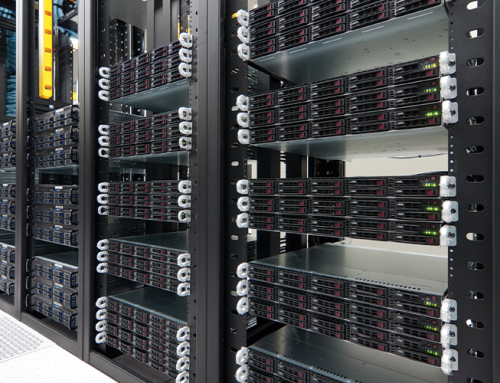Have you met Maslow? He’s the guy behind that triangle diagram that refers to human needs. While this relates to people in their personal lives, it also applies to the Internet of Things (aka IoT) and businesses. The construction industry is where business and the IoT intersect. Turns out, your jobsite has a hierarchy of needs, too.
Digitized jobsites are inevitable. Making the transition to digital isn’t easy, and it can be overwhelming, so we’ve broken it down into parts. Much as humans have basic needs for survival, the construction industry has basic technological needs that require nurturing before escalation. They look something like this:

Let’s break these down into each section, starting with the most basic need: Bandwidth.
Bandwidth
Everything digital on your jobsite is dependent upon a stable, reliable connection. To get the most value from your tech, you need the correct bandwidth to support your jobsite. If your bandwidth isn’t properly addressed, your business will have trouble scaling the pyramid.
A common problem in the industry is not knowing how much bandwidth you need, and it’s not a one-size-fits-all solution. Think of bandwidth like a water pipe. Getting the right pipe to accommodate the users is crucial for success because it:
- Speeds communication
- Provides instant sharing and accessing of information
- Reduces time to complete tasks
You need reliable, high-functioning bandwidth, often in remote locations, and you need a team who can troubleshoot and monitor to prevent and resolve issues swiftly. A managed network provider is designed to help.
Hardware/Software
Hardware
Having the right tools for your tech (aka hardware) is key. Your hardware enables more work with less effort. What constitutes hardware tech on a jobsite?
- Job trailer tech (think servers, laptops, printers)
- Drones
- Tablets
- Smartphones
- GPS devices
- Robots
- 3D printing
- Laser scanners
All of these components add value to a jobsite. Most require an internet connection with speed to upload their information to your database in a timely manner, which is why it’s crucial to lay the foundation with great broadband.
Software
Software is crucial for the details. CAD and BIM (Building Information Management) programs need to be usable on your hardware. Back-end software keeps a project flowing from start to finish. Think scheduling, project management, apps, finances. Without reliable connections, this information has to be manually exchanged. That’s more time on the clock that takes away from productivity.
Once your hardware and software needs have been met, it’s time to focus on protection.
Security
Security is imperative to any business, and with the rise in tech, it’s important to make sure your data is impenetrable. Without security, your team will waste hours trying to prevent hacks, recoup data loss, or attempting to restore/retrieve lost data, instead of focusing on tactics that will improve speed and efficiency within your operations. You’ll never make it to integration if your team is stuck in preservation mode.
Any business should take measures to prevent hacking, viruses, and loss of information. Using strong passwords, storing things in the cloud, backing up data, and securing private information are all helpful. File sharing is a great way to transport information, but you want to do that safely. Mobile access adds another layer of exposure that needs to be addressed.
Security is a beast. A Managed Services Provider (MSP) has all the tools to keep security breaches from ruining your bottom line.
Integration
Integrating tech is vital for the construction industry. Why? Because having everything connected reduces the time it takes to complete tasks, get organized, and plan while reducing error. Time is money in construction, after all.
With integrated tech, teams can improve:
- Communication between engineers and project managers
- Sharing of project updates in a timely, error-free manner
- Planning, scheduling, and monitoring
- Reliability of claims
- Compliance disputes by reducing or preventing disparities
- Insights for: cost, safety, scheduling, performance, and quality of each project
- Material and labor budgeting and scheduling
Communication tends to be a wide-spread problem in the construction industry. By integrating your tech, software, and apps, communication is clearer, faster, and traceable. No more miscommunication, no more costly mistakes. Integration allows you to take the most important step toward company growth: scaling operations with tech.
Scalable and Flexible
Your tech needs to be able to adapt as the project develops. Jobsites can become complex, requiring different tech needs as demand changes. It’s important to streamline the approach to scaling site technology as a project evolves.
An added bonus? Being able to grow as needed or change on a dime without hassle allows smaller construction teams to compete with larger construction companies. By streamlining manual processes with tech, time-consuming (but necessary) functions, like:
- documenting
- reporting
- communicating
- project management
take less time, freeing your team to focus on bigger ticket items.
Climbing the Tech Pyramid
Time is always of the essence on a construction site, and jobsites are constantly evolving. As with Maslow’s Hierarchy, the needs for a construction business work much the same as the process of creating a building. You start with the foundation and work your way up.
You know your jobsite needs Internet with access that allows for digital transportation of knowledge. Technology that can streamline and improve the speed of projects is key.
The thing is, maybe you’ve used tech, and you’re not impressed. Perhaps your field connectivity isn’t performing in a way that aids your tech tools. You’re left with a bad taste in your mouth: Tech isn’t really doing all that much for your business.
But it could be. With reliable field connectivity, tech can take your business where you want to go. A MISP ensures your foundation is laid correctly so you can climb the pyramid with ease.
Like this post? Subscribe to our blog:






